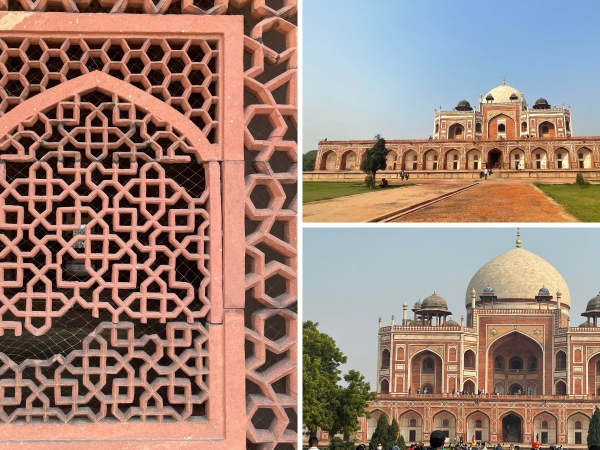The Geometry of Empire: Exploring the Mughal Design Language in Humayun's Tomb
The Geometry of Empire is a five-part journey through the world of Mughal architecture from Delhi to Agra and Fatehpur Sikri. Each course explores a different building type within this remarkable era - mausoleums, forts, palaces, and dargahs (shrines) - revealing how geometry shaped every aspect of their design.
Students will learn how the Mughals used geometry not only as a decorative tool but also as a way of expressing order, harmony, and proportion. Through analytical drawings and historical study, the series connects art, mathematics, and built heritage.
By the end of the series, students will have developed a deep understanding of how geometry formed the foundation of Mughal design, how it was translated into stone and craft, and how it continues to influence the visual language of India today.
This first course begins at Humayun’s Tomb in Delhi, the monument that laid the foundation for later Mughal masterpieces such as the Taj Mahal. Over four weeks, students will explore how geometry and design come together in this early Mughal structure.
Through photographs, guided drawing exercises, and discussions, students will study patterns based on 4-fold, 6-fold, 12-fold, and 9-fold symmetries, learning to build grids, derive patterns, and discover new forms within them.
We will also explore the material ex
Booking Options
The Geometry of Empire is a five-part journey through the world of Mughal architecture from Delhi to Agra and Fatehpur Sikri. Each course explores a different building type within this remarkable era - mausoleums, forts, palaces, and dargahs (shrines) - revealing how geometry shaped every aspect of their design.
Students will learn how the Mughals used geometry not only as a decorative tool but also as a way of expressing order, harmony, and proportion. Through analytical drawings and historical study, the series connects art, mathematics, and built heritage.
By the end of the series, students will have developed a deep understanding of how geometry formed the foundation of Mughal design, how it was translated into stone and craft, and how it continues to influence the visual language of India today.
This first course begins at Humayun’s Tomb in Delhi, the monument that laid the foundation for later Mughal masterpieces such as the Taj Mahal. Over four weeks, students will explore how geometry and design come together in this early Mughal structure.
Through photographs, guided drawing exercises, and discussions, students will study patterns based on 4-fold, 6-fold, 12-fold, and 9-fold symmetries, learning to build grids, derive patterns, and discover new forms within them.
We will also explore the material ex


